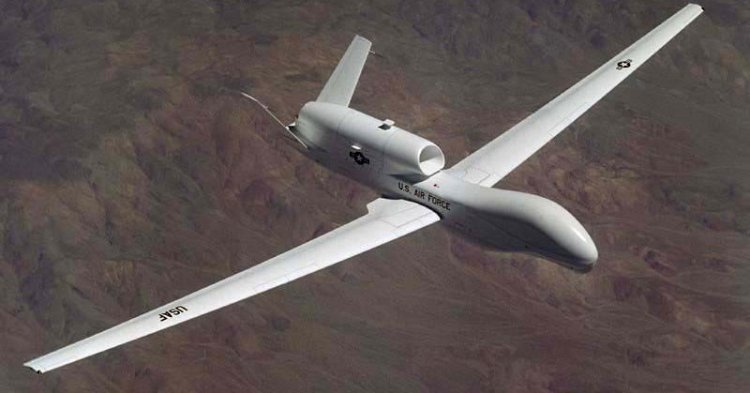Defense pundits still in denial about the need to keep explosive weaponry ‘clean’
War… War never changes. Although one can argue that technology has gravely influenced the tactics used by men to fight each other, it has never made war less gruesome, more ‘sterile’, more humane or even more likeable. Most armaments providers nowadays argue that they can deliver precision laser-guided bombs tested to fall within a few meters accuracy from the intended target (but believe me when I tell you that’s a marketing fairytale, even with the latest advanced technology) and minimize ‘collateral damage’. In reality, the business of war has been trying to advance the application of explosives into something like perfecting a recipe to kill with more ‘surgical finesse’. Just think about the use of Unmanned Aerial Vehicles (UAV’s) with deadly payloads of missiles or bombs – which are supposedly used for limited precision strikes against carefully pre-assessed and verified targets. Reports about the amount of civilian non-combatant UAV lethal casualties generally lack reliability and give contradicting figures, ranging from ‘One out or three are civilians’, ‘Over 700 civilians killed by 44 attacks in 2009’ (Pakistani statistics) to another report citing 43 out of 404 killed in Pakistan in 2009 being non-taliban/non-al Qaeda casualties . It’s hard to distinguish the official versions from confirmed and non-biased counts. With any reserve for nuance, it is however vital to say that (at least) the first-generation versions of UAV drones are NOT the intelligent tools strategists profess them to be. Although they are said to be outfitted with improved target guidance systems (in the case of UAV’s even piloted) they are likely not able to make a last-second verification to distinguish between unarmed civilians and Taliban. That makes it fairly ease to blur out or ‘rationalize’ collateral damage.
In reality, the business of war has been trying to advance the application of explosives into something like perfecting a recipe to kill with more ‘surgical finesse’.
In the Vietnam war, the U.S. armed forces tested out Agent Orange and napalm with devastating consequences to life and limb, of whom many victims that survived still carry the horrifying consequences: charred and mutilated flesh and body parts, amputations and skin-related diseases to name a few. Analysts like Paul Walker have also set the record straight about the ‘myth of surgical bombing during the Gulf War. During the Iraq War of 2003, none of the so-called high-sophisticated ‘precision strikes’ by F117 Stealth Fighters actually hit their intended targets, according to documentary maker Eugene Jarecki.
Dreadful ‘tail hooking’ butcher traps
Since the late 80ies, these gruesome ‘dirtier’ warfare explosives and substances have acquired new nephews in the form of ‘advanced’ cluster munitions. The idea is to drop a bomb that discharges a first explosion, yet contains secondary hidden charges that explode in relatively intermittent (as in a relative ‘delay’) sequences. Yet in the worst case, the secondary payloads don’t discharge at all, and may even remain buried or left untouched for years. Until the Grim Reaper plays a foul game, and some careless soul accidentally hits a trigger mechanism on his path, thereby killing him- or herself in a most perverse manner that is too cruel for words. These trigger mechanisms are purposefully set to go off, without any distinction to age, race, gender, or status. They are ‘indiscriminate’ by design, unless you are very lucky and subject to a miracle.
In modern-day armed conflicts, such as the 2007 war by Israel against Hizb’allah in Lebanon, cluster munitions are still being utilized, regardless of widespread protests from various consciousness whistleblowers all over the world. It is deplorable, to say the least, that the social economic, mental and physical costs of cluster ammunition are still ignored and their use is even ‘normalized’ in contemporary military doctrines.


1. On 30 March 2010 at 19:06, by Redneck European Replying to: An expansive explosive radius equals higher ‘kill probability’ (Part I )
Replying to: An expansive explosive radius equals higher ‘kill probability’ (Part I )
“In reality, the business of war has been trying to advance the application of explosives into something like perfecting a recipe to kill with more ‘surgical finesse” Well isn’t that exactly the purpose of developing most military weapons? And if this weren’t the case, why would we be wasting all this money on military research?
“Although they are said to be outfitted with improved target guidance systems (in the case of UAV’s even piloted) they are likely not able to make a last-second verification to distinguish between unarmed civilians and Taliban.” Why would the operator of a UAV, sitting safely in an operating container in Nevada, be less “likely to make a last-second verification” in comparison to a, lets say, F16 pilot who has been on patrol over hostile territory for several hours? After all, the instruments used in an F16 can also be used in an UAV. In fact with the F16 being a relatively old vehicle, despite the fact that it has been modernized several times, the instruments in these high tech UAV’s are less outdated then their F16 counterparts.
Despite all this I still completely fail to see the connection between cluster munitions and UAV’s.
2. On 2 April 2010 at 17:37, by Nico Segers Replying to: An expansive explosive radius equals higher ‘kill probability’ (Part I )
Replying to: An expansive explosive radius equals higher ‘kill probability’ (Part I )
Not any weapons system is an ’explosive’ type system, this was my basic assumption. The more explosive it gets, doesn’t correlate positively with accuracy.
You’re right in pointing out the strange comparison I’m making between UAV’s and cluster munitions. Their designs are in fact, entirely opposite to one another: Cluster munitions aim at a maximum spread of the blast, while UAV’s tend to drop a smaller payload on a precision scale. I am not targeting all UAV’s by default, because many are just used for reconnaisance and IMINT. I don’t have all statistict to claim that most UAV’s still lack precision for their range. A soldier (hopefully) identifies a target first befire firing. Because there’s no way to correct the error. For UAV intelligence, the root cause lies with assesment and timely intervention. The 2 or 3 UAV specialist flyers follow orders and can’t ’second guess’ while being given orders, but the intelligence people steer the way the targets are selected and qualified. UAV’s are not designed to adjust to the human error (and I guess there’s no technical armaments system that can). That makes them not ’more’ smart than cluster munitions. It may seem a really redundant remark, but many readers don’t think the payload UAV concept through.
With regards to F16 missile guidance... The pilots of these planes have a learning curve to master and get their skills right during difficult exercises. UAV’s are relatively new, so errors are theoretically more common. The key is situational awareness, and without having knowledge on the ground, it’s hard to be sure that your target isn’t an innocent civilian.
Follow the comments: |
|
